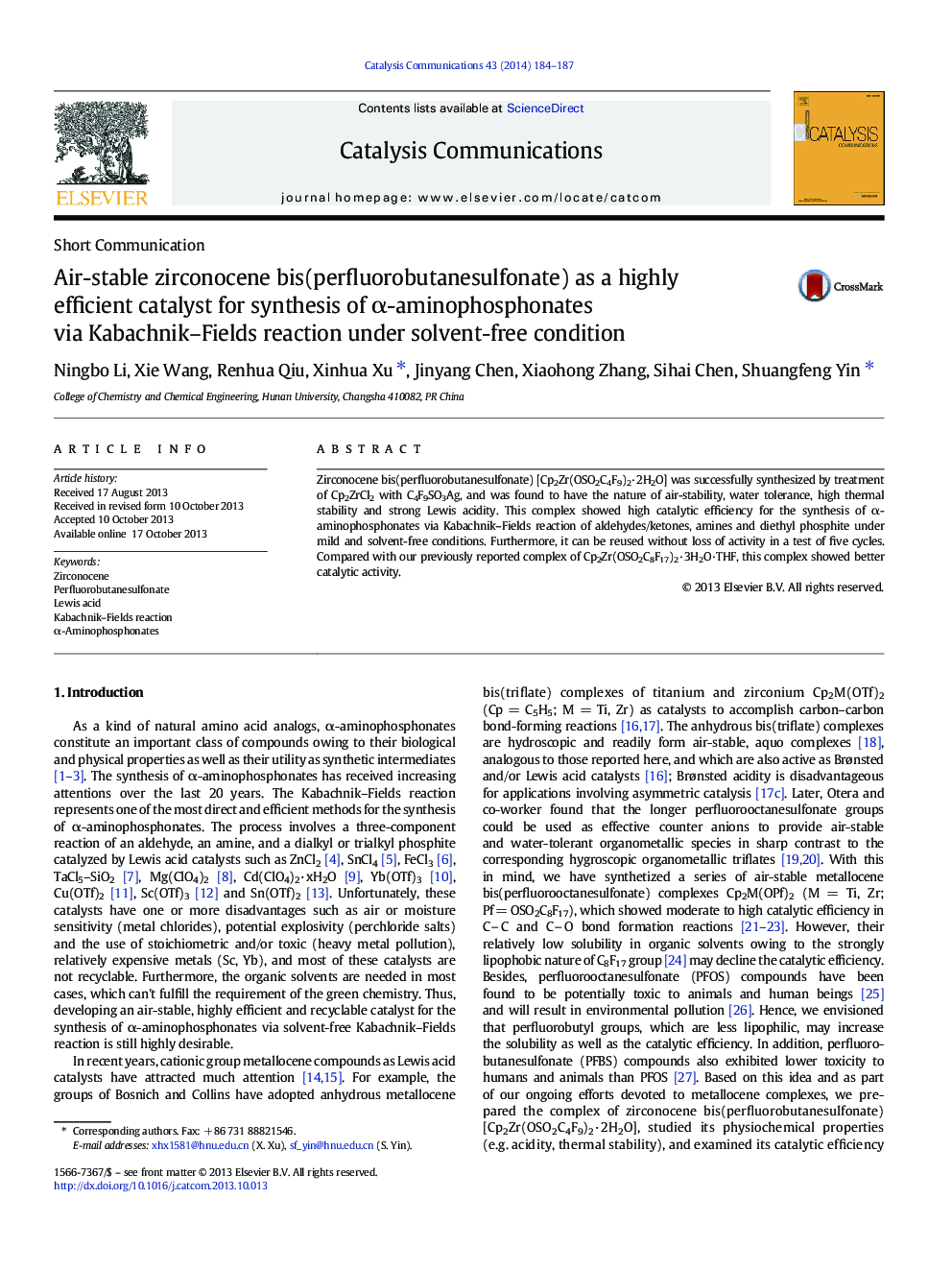| Article ID | Journal | Published Year | Pages | File Type |
|---|---|---|---|---|
| 50438 | Catalysis Communications | 2014 | 4 Pages |
•A general and mild protocol for the synthesis of α-aminophosphonates•Catalytic amount of Cp2Zr(OSO2C4F9)2·2H2O exhibited higher catalytic activity.•The good-to-excellent yields were obtained under solvent-free condition.•Catalyst can be reused without significant loss of activity in a test of five cycles.•A plausible mechanistic approach has also been proposed.
Zirconocene bis(perfluorobutanesulfonate) [Cp2Zr(OSO2C4F9)2·2H2O] was successfully synthesized by treatment of Cp2ZrCl2 with C4F9SO3Ag, and was found to have the nature of air-stability, water tolerance, high thermal stability and strong Lewis acidity. This complex showed high catalytic efficiency for the synthesis of α-aminophosphonates via Kabachnik–Fields reaction of aldehydes/ketones, amines and diethyl phosphite under mild and solvent-free conditions. Furthermore, it can be reused without loss of activity in a test of five cycles. Compared with our previously reported complex of Cp2Zr(OSO2C8F17)2·3H2O·THF, this complex showed better catalytic activity.
Graphical abstractA general mild and efficient, one-pot, solvent-free protocol for the synthesis of α-aminophosphonates has been developed via the Kabachnik–Fields reaction of aldehydes/ketones, amines and diethyl phosphite using recyclable catalyst zirconocene bis(perfluorobutanesulfonate). On account of its stability as well as storability, this catalyst should find a broad range of utility.Figure optionsDownload full-size imageDownload as PowerPoint slide
